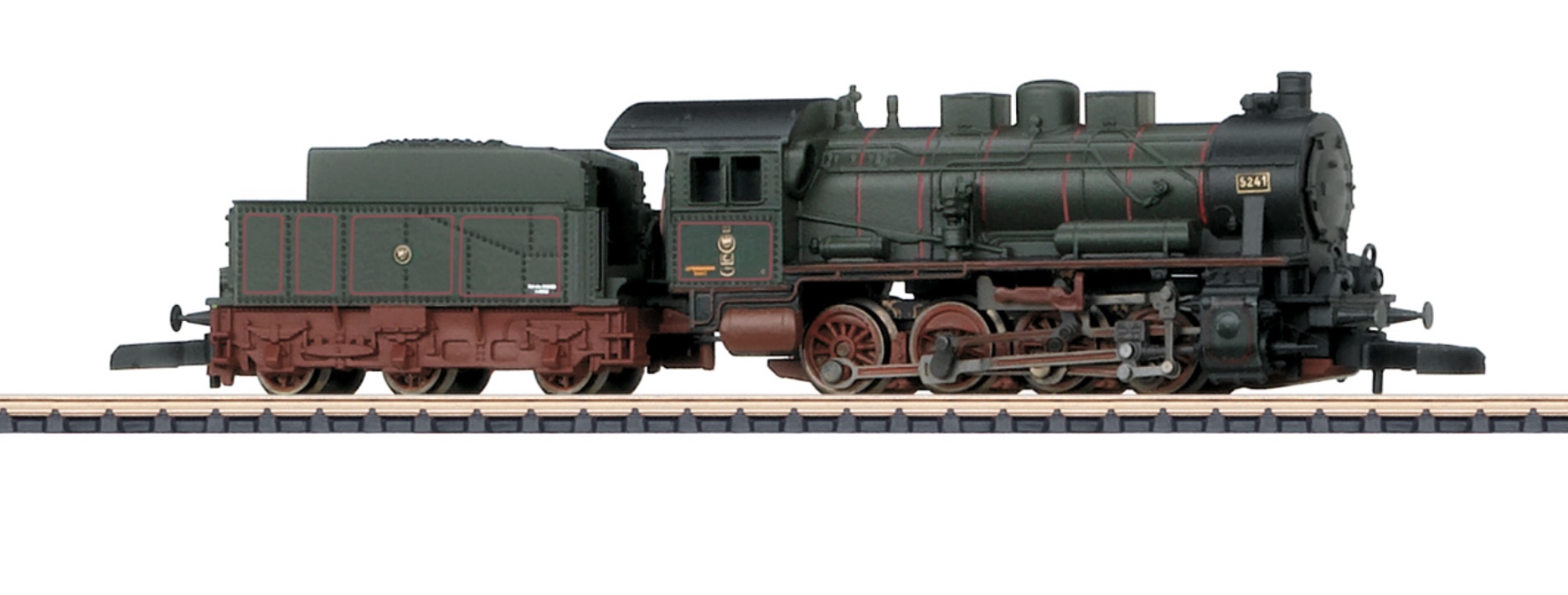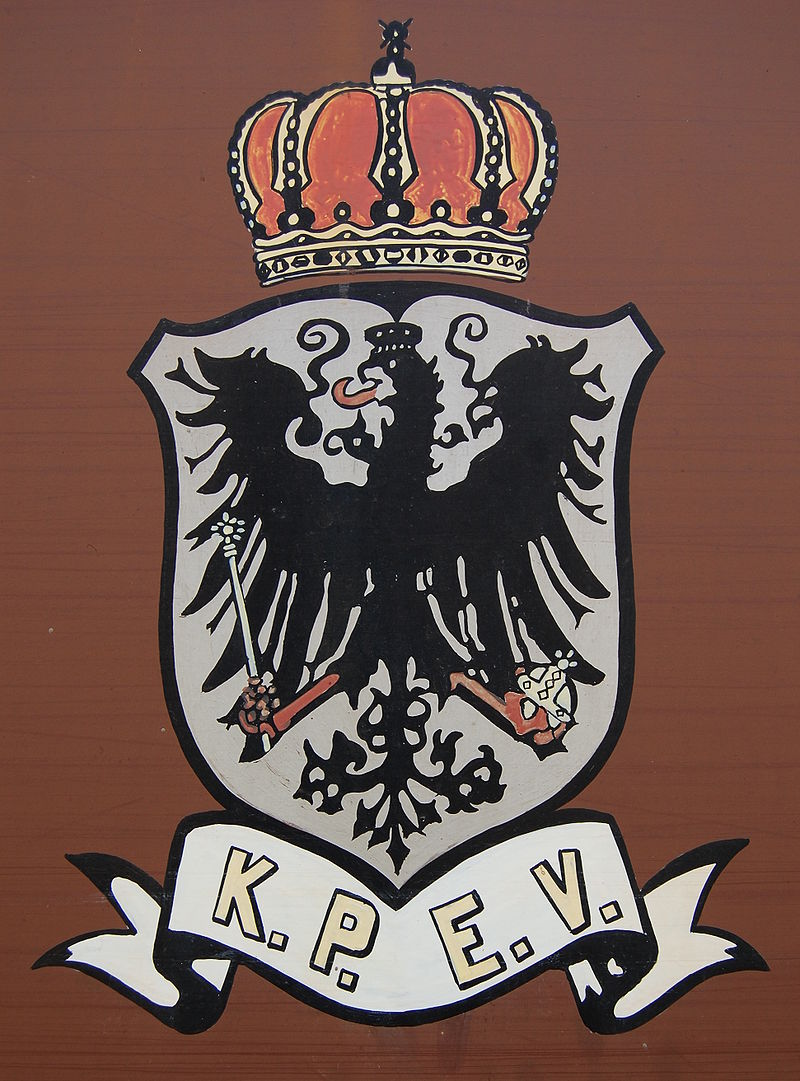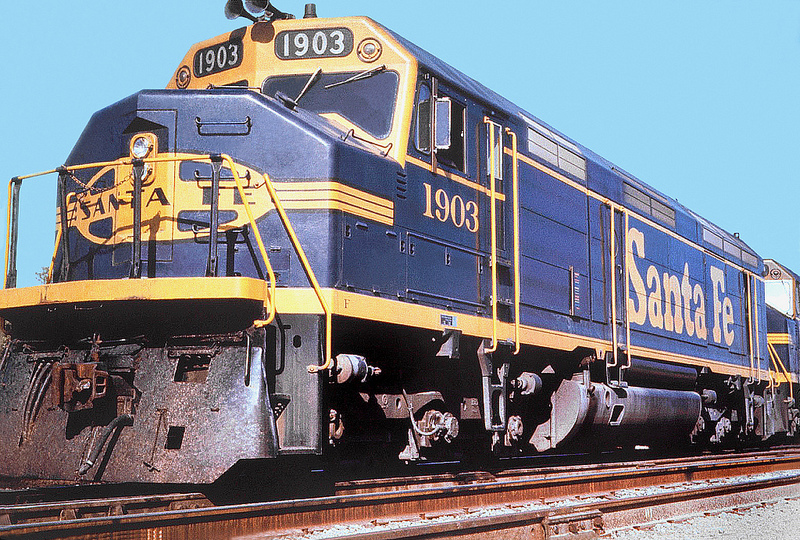Specific Item Information: Increasing trainloads in Prussian freight service required more powerful steam locomotives starting in 1908. This resulted in the further development of the successful class G 8 in 1913, the class G 8.1. Its boiler was basically the same as that of the G 8, but the use of thicker sheet metal and a larger diameter made it heavier than its predecessor. Thicker sheet metal was also used on the frame thus increasing the unit's adhesion weight. The new tender, the Prussian type 3T16,5, was developed just for the G 8.1, which clearly expanded the locomotive's operating range. The G 8.1 (DRG class 55.20-56) had become one of the German steam locomotives built in the largest numbers. In only eight years, the Prussian-Hessian State Railways placed 4,958 units in service. In view of its quantity, it is no wonder that this 55 km/h / 34 mph fast and around 1,260 horsepower unit with four driving axles was at home on all of the rail lines. The three-unit freight car set stands as a symbol for the "good old days". It consists of typical cars: a coal gas car (for car and station lighting), an Association design boxcar transporting any kind of "packaged" load as well as a beer refrigerator car for the replenishment of this generally popular "liquid gold". With the G 8.1 pulling it, you have a very prototypical freight train that leaves nothing to be desired. Royal Prussian Railroad Administration (KPEV) class G 8.1 with a type 3T16,5 tender. The locomotive looks as it did in Era I.
Road Name History: The term Prussian state railways (German: Preußische Staatseisenbahnen) encompasses those railway organisations that were owned or managed by the State of Prussia. The words "state railways" are not capitalized because Prussia did not have an independent railway administration; rather the individual railway organizations were under the control of the Ministry for Trade and Commerce or its later offshoot, the Ministry for Public Works.
The official name of the Prussian rail network was Königlich Preußische Staatseisenbahnen (K.P.St.E., "Royal Prussian State Railways") until 1896, Königlich Preußische und Großherzoglich Hessische Staatseisenbahn (K.P.u.G.H.St.E., "Royal Prussian and Grand-Ducal Hessian State Railways") until the end of the First World War, and Preußische Staatsbahn (P.St.B., "Prussian State Railway") until its nationalization in 1920. A common mistake is the use of the abbreviation K.P.E.V. in supposed reference to a mythical "Royal Prussian Railway Administration" (Königlich Preußischen Eisenbahn-Verwaltung). No such entity ever existed and Prussian railway cars acquired the K.P.E.V. logo apparently through an error originating in their Cologne division.
From Wikipedia
The official name of the Prussian rail network was Königlich Preußische Staatseisenbahnen (K.P.St.E., "Royal Prussian State Railways") until 1896, Königlich Preußische und Großherzoglich Hessische Staatseisenbahn (K.P.u.G.H.St.E., "Royal Prussian and Grand-Ducal Hessian State Railways") until the end of the First World War, and Preußische Staatsbahn (P.St.B., "Prussian State Railway") until its nationalization in 1920. A common mistake is the use of the abbreviation K.P.E.V. in supposed reference to a mythical "Royal Prussian Railway Administration" (Königlich Preußischen Eisenbahn-Verwaltung). No such entity ever existed and Prussian railway cars acquired the K.P.E.V. logo apparently through an error originating in their Cologne division.
From Wikipedia
Brand/Importer Information: Gebr. Märklin & Cie. GmbH or Märklin (MÄRKLIN or MAERKLIN in capital letters) is a German toy company. The company was founded in 1859 and is based at Göppingen in Baden-Württemberg. Although it originally specialized in doll house accessories, today it is best known for model railways and technical toys. In some parts of Germany and in Sweden, the company's name is almost synonymous with model railroads.
Märklin introduced Z Scale in 1972. Connoisseurs appreciate Märklin Z as much as the most inveterate modeler: The charm of these finely constructed gems is best seen in the smallest of space. Because, this scale with all kinds of precision translated into 1:220 scale awaits you with almost unlimited operating enjoyment. It doesn't get any better.
Märklin introduced Z Scale in 1972. Connoisseurs appreciate Märklin Z as much as the most inveterate modeler: The charm of these finely constructed gems is best seen in the smallest of space. Because, this scale with all kinds of precision translated into 1:220 scale awaits you with almost unlimited operating enjoyment. It doesn't get any better.
Item created by: CNW400 on 2022-08-12 10:21:06. Last edited by CNW400 on 2022-08-12 10:28:37
If you see errors or missing data in this entry, please feel free to log in and edit it. Anyone with a Gmail account can log in instantly.
If you see errors or missing data in this entry, please feel free to log in and edit it. Anyone with a Gmail account can log in instantly.









